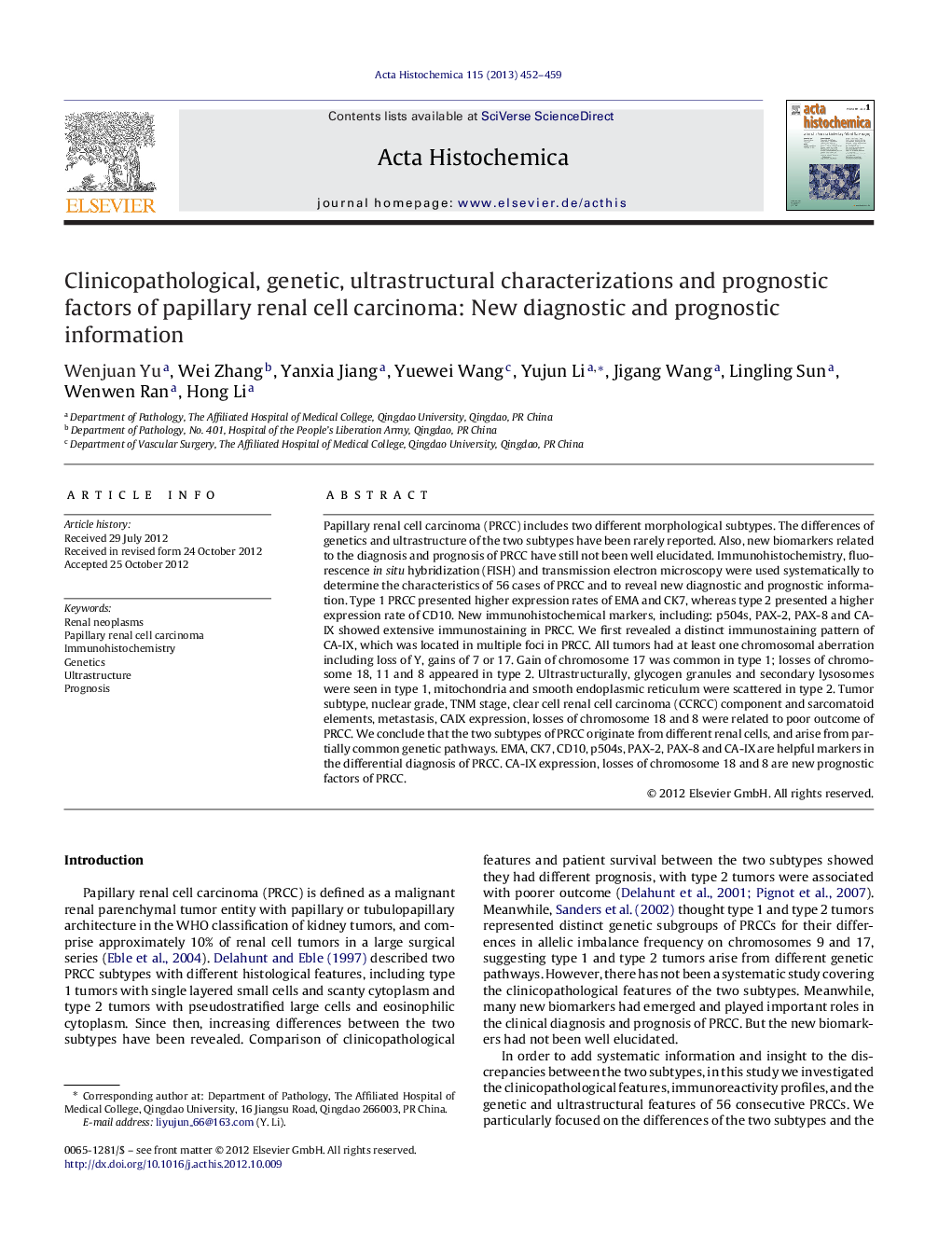| Article ID | Journal | Published Year | Pages | File Type |
|---|---|---|---|---|
| 1923665 | Acta Histochemica | 2013 | 8 Pages |
Papillary renal cell carcinoma (PRCC) includes two different morphological subtypes. The differences of genetics and ultrastructure of the two subtypes have been rarely reported. Also, new biomarkers related to the diagnosis and prognosis of PRCC have still not been well elucidated. Immunohistochemistry, fluorescence in situ hybridization (FISH) and transmission electron microscopy were used systematically to determine the characteristics of 56 cases of PRCC and to reveal new diagnostic and prognostic information. Type 1 PRCC presented higher expression rates of EMA and CK7, whereas type 2 presented a higher expression rate of CD10. New immunohistochemical markers, including: p504s, PAX-2, PAX-8 and CA-IX showed extensive immunostaining in PRCC. We first revealed a distinct immunostaining pattern of CA-IX, which was located in multiple foci in PRCC. All tumors had at least one chromosomal aberration including loss of Y, gains of 7 or 17. Gain of chromosome 17 was common in type 1; losses of chromosome 18, 11 and 8 appeared in type 2. Ultrastructurally, glycogen granules and secondary lysosomes were seen in type 1, mitochondria and smooth endoplasmic reticulum were scattered in type 2. Tumor subtype, nuclear grade, TNM stage, clear cell renal cell carcinoma (CCRCC) component and sarcomatoid elements, metastasis, CAIX expression, losses of chromosome 18 and 8 were related to poor outcome of PRCC. We conclude that the two subtypes of PRCC originate from different renal cells, and arise from partially common genetic pathways. EMA, CK7, CD10, p504s, PAX-2, PAX-8 and CA-IX are helpful markers in the differential diagnosis of PRCC. CA-IX expression, losses of chromosome 18 and 8 are new prognostic factors of PRCC.
